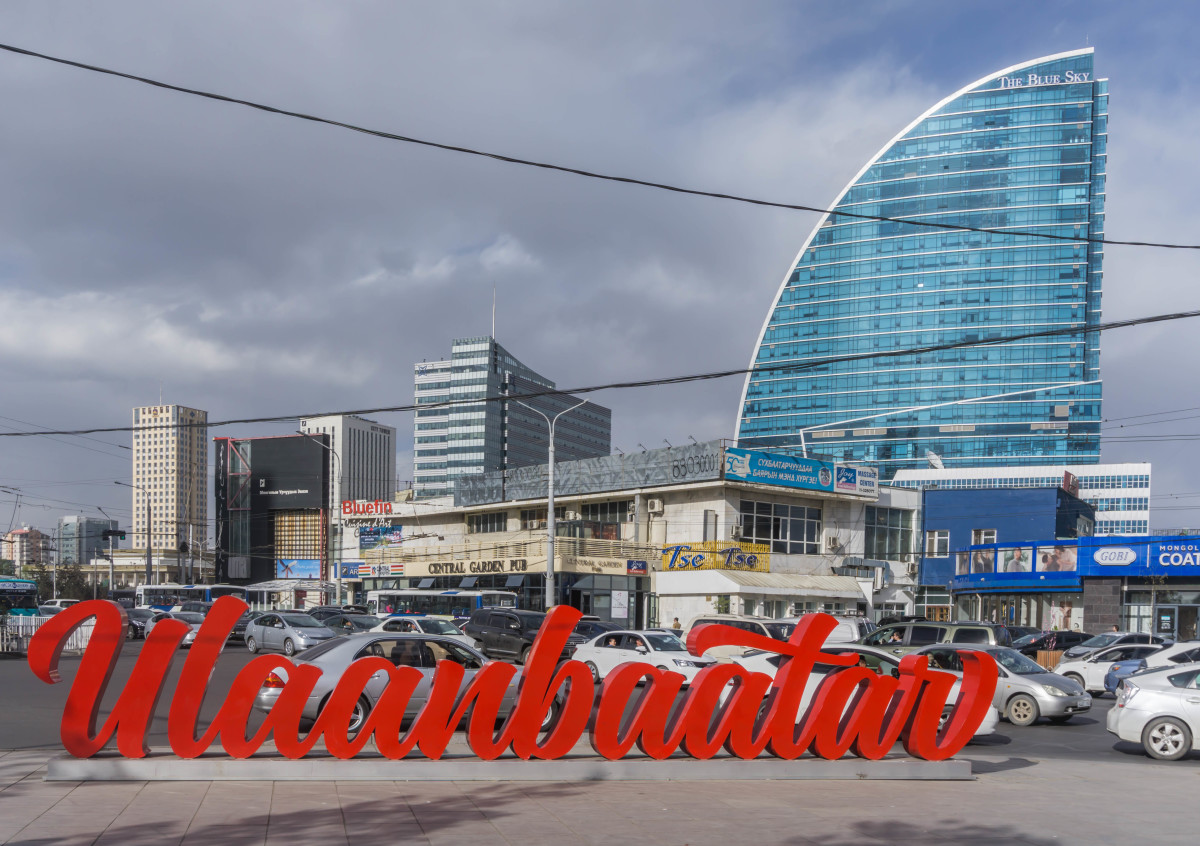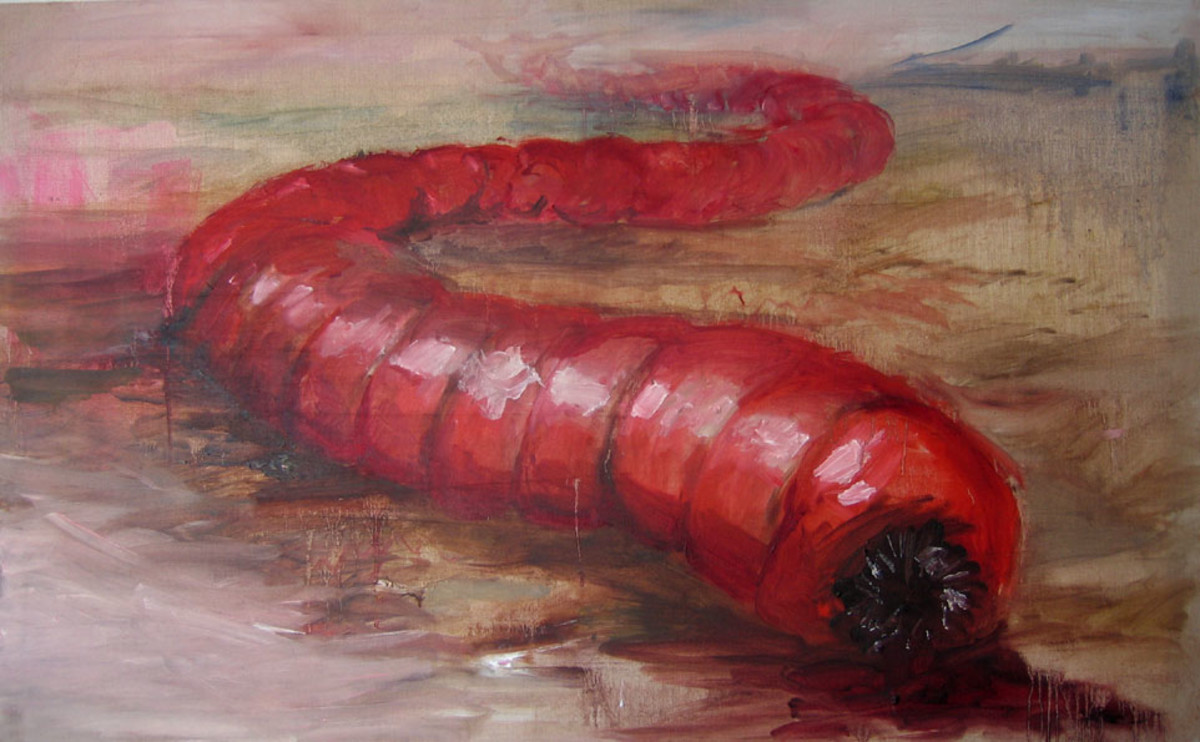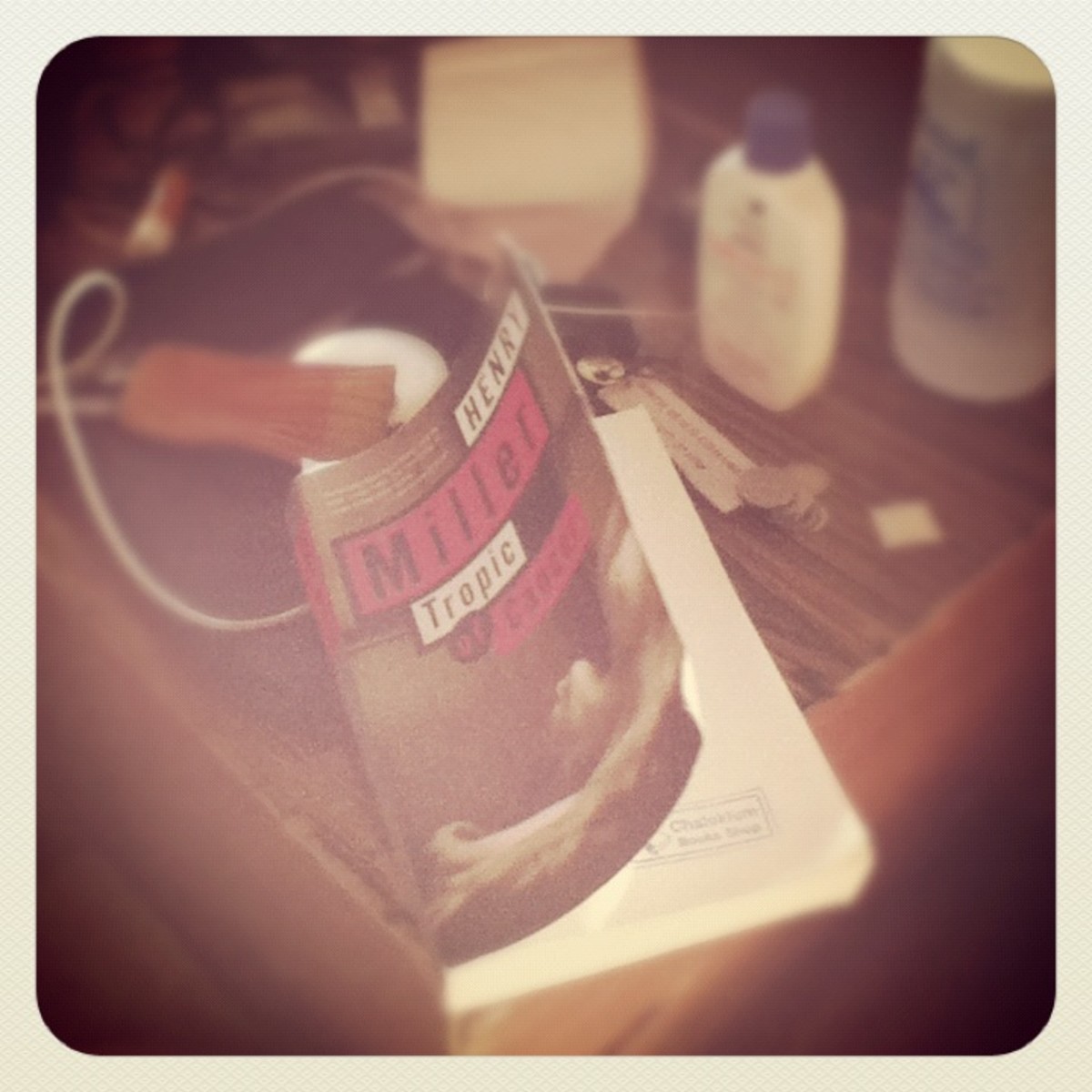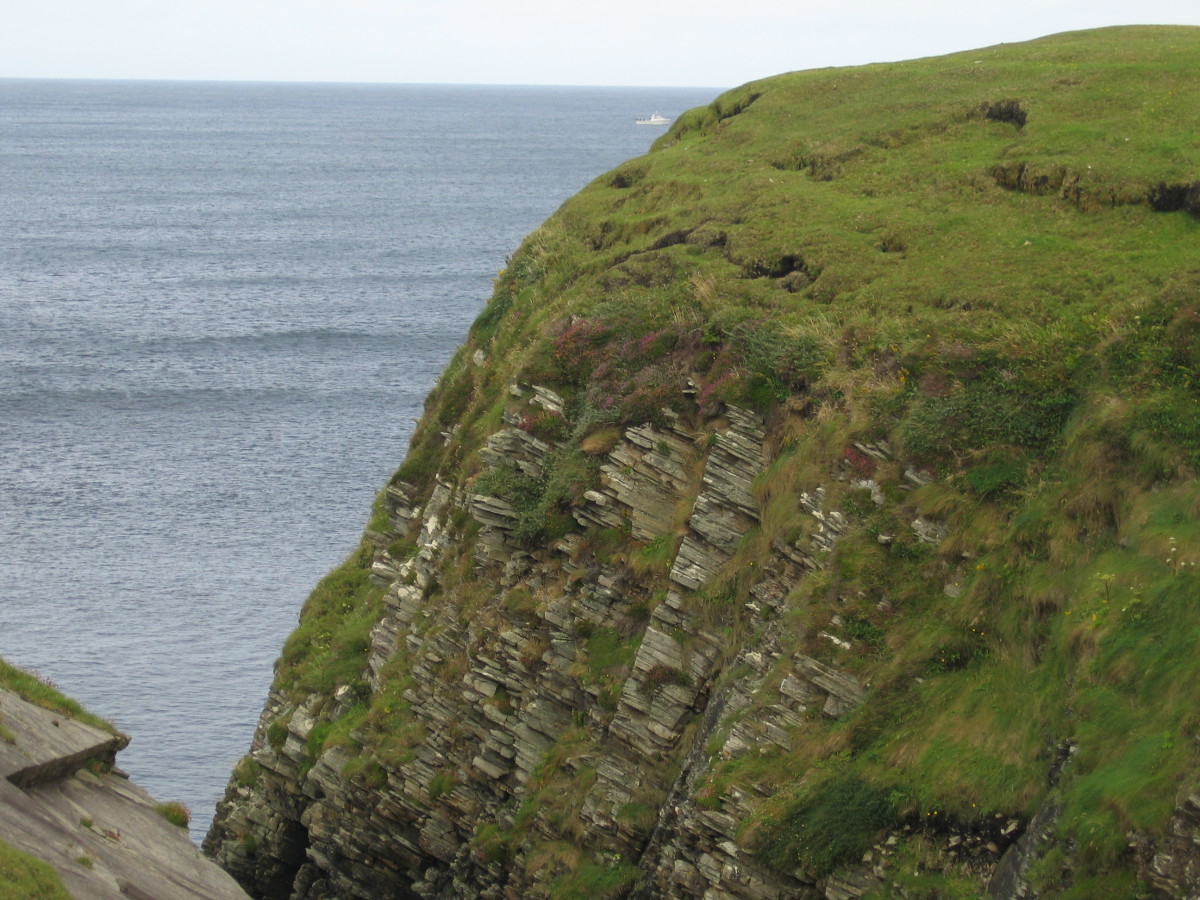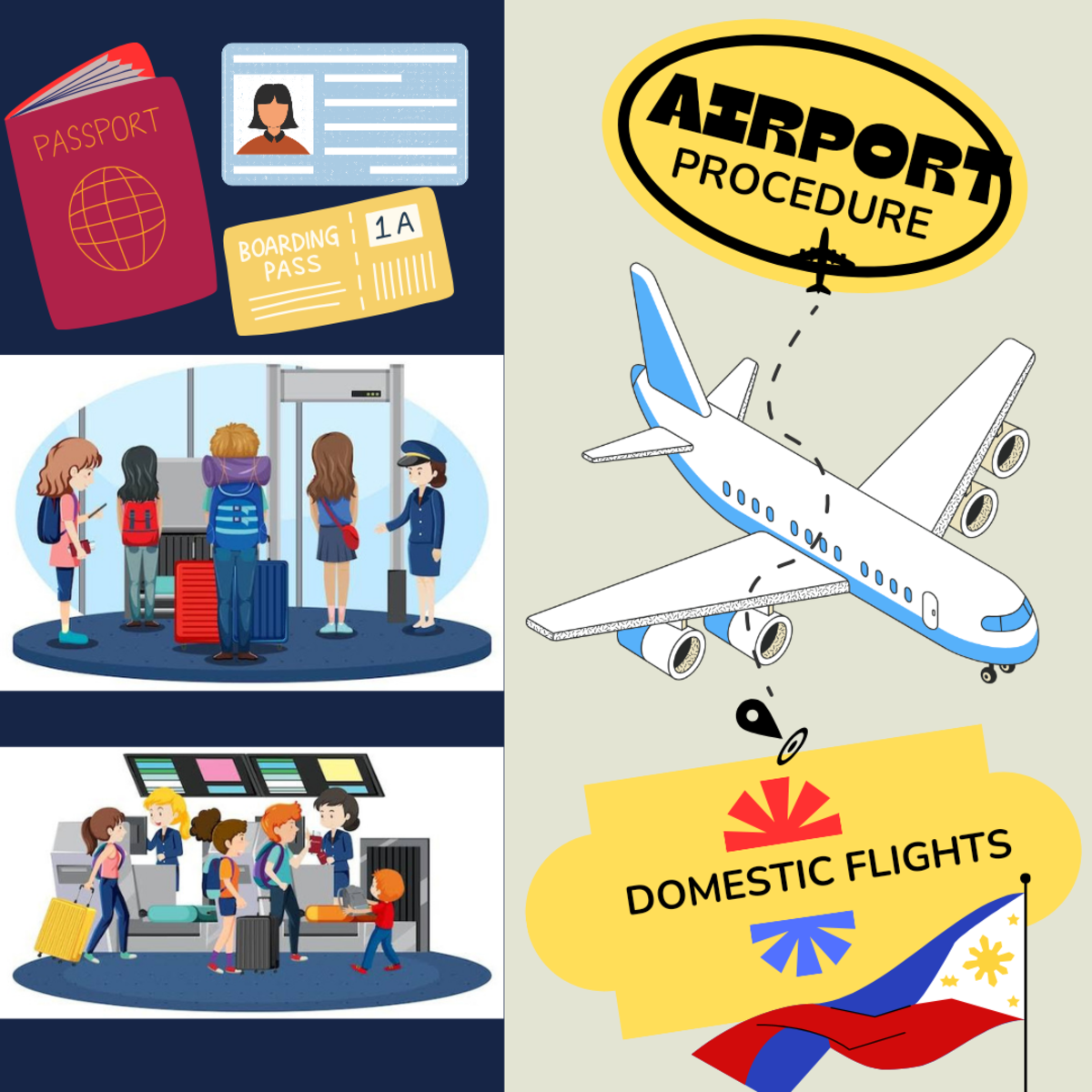Mongolia: A Beginner's Travel Guide
Mongolia: The Land of Genghis Khan
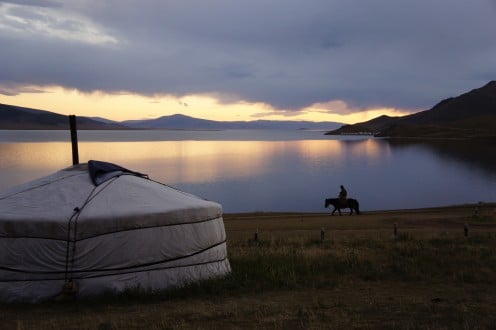
The Power of a Name
Just the name Mongolia is enough to conjure up images of a wild and ancient, untamed land; home to Mongol horsemen, Genghis Khan, the Gobi Desert and the exotic city of Ulaan Baatar ; a country so far out of the loop that it is sometimes still referred to as “Outer Mongolia, (as opposed to ‘Inner’, which is an adjacent region of China). Although all these dreamlike aspects of Mongolia still apply, nowadays, it is a relatively easy country to visit and is rapidly becoming a part of the regular Asian tourist trail, as well as a favourite of adventurous backpackers. Despite this new accessibility, the power of the name still generates excitement and trepidation amongst people contemplating their first trip to the country. It certainly had that affect on my partner, Sheila, and me, before we went there in September 2011.
Mongolia - the meat in an exotic sandwich
Extent of the Mongol Empire
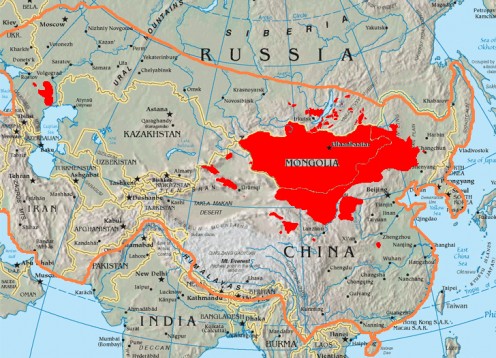
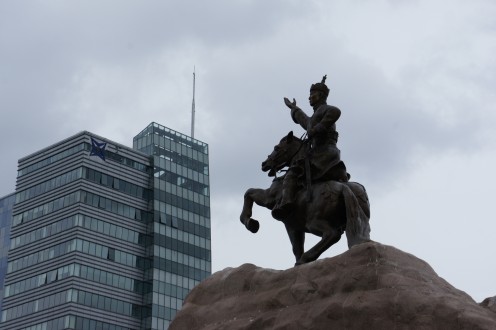
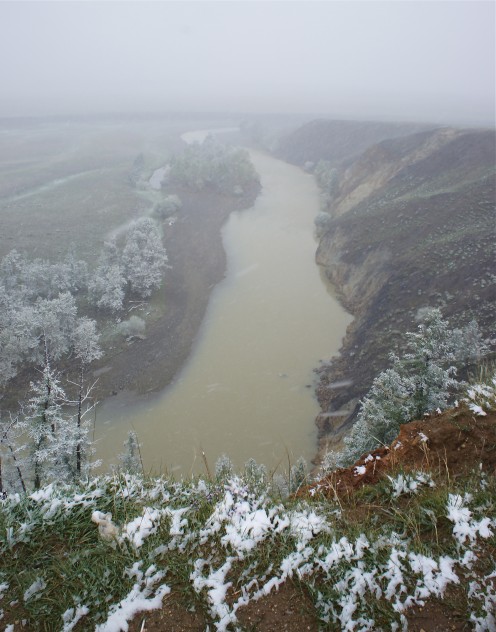
Yurt or Ger?
The traditional accommodation in Mongolia is the round marshmallow-shaped tent called a 'Ger'. It is basically the same structure as a Yurt which is the Turkish version. The ger has been used by the nomads of Asia for over 3000 years and are as cosy and practical as they are iconic. They are highly decorated inside and have a wood burner in the centre to keep them warm. Out in the Mongolian steppes, even the guesthouses are a collection of gers. Modern day nomads use solar power and satellite dishes to provide a few mod-cons such as TV.
Mongolia: Did you know...?
With an area of over 600,000 sq. miles, Mongolia is the second largest land-locked country in the world (behind Kazakhstan) the most sparsely populated independent country in the world.(source: Wikipedia). almost 50% of it's population of 3 million live in the capital city, Ulaan Baatar, while the remainder a dispersed amongst a small number of smaller cities and town, or can be found in nomadic encampment dotted about in the vast emptiness of steppes, hill country and desert.
For a country boasting such meager demographic statistics it has played a major role in the history and development of both Asia and the west. I need only mention the exploits of Genghis Khan, the country's greatest folk hero, to illustrate this point. Genghis Khan's conquest created the largest contiguous land empire in history, stretching from Korea in the east to Poland in the west and from Siberia to Vietnam and the Gulf of Oman in the south. Genghis's grandson was Kublai Khan who became emperor of China and founded what is the modern day city of Beijing - some achievement for a bunch of nomadic horsemen who live in tents that resemble marshmallows.
In the 20th Century Mongolia fell under the control of the Soviet Union which resulted in both positive and negative outcomes. The country has a high literacy rate but during Stalin's rule thousands of people we killed in brutal pograms, particularly Buddhist monks who also saw most of their monasteries destroyed.
Mongolia is one of the coldest countries in the world with an average annual temperature of 0°C. This means long cold winters and short summers when most of the rain falls, although it can get mighty hot and dry out in the Gobi desert and on the endless steppes that make up much of the nation's terrain. Whichever way you look at it, Mongolia is a fascinating country with many extremes and a small but remarkably stoic and friendly population.
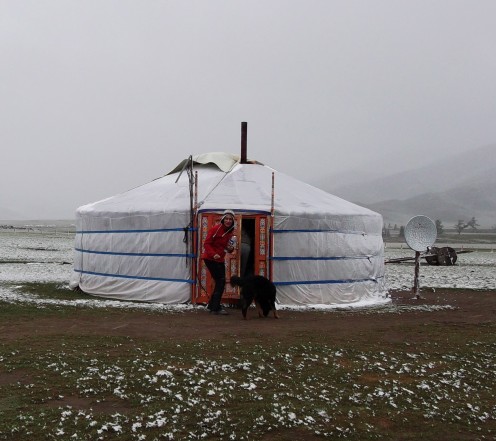
The Best Time to Go
Now! In the broader sense, now, meaning this year, next year or as soon as you can as Mongolia is rapidly modernising and becoming more popular as a tourist destination, and consequently more expensive and for want of a better way of putting it - ‘less wild’.
The big event in the Mongolian cultural calendar is the Naadam festival (11-12 July). The Lonely Planet describes it as the Mongolian Nomads' Olympic Games, but also as a giant family reunion, and fair. Sadly, we missed it by a month or more, but being in Mongolia was enough of a buzz itself for us to be disappointed, besides, I think everything would be more expensive and crowded, with locals and tourists alike.
Sunny one day...
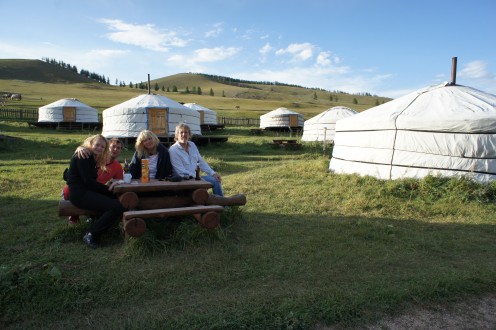
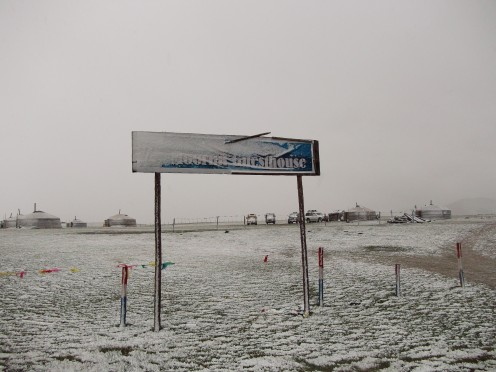
The Weather
Ulaan Baatar is considered to be the coldest capital city on earth. It is nestled in a valley between high mountains and I can imagine the ferocious Siberian winds blasting down Peace Avenue, the wide main boulevard that runs through the centre of the city. The morning we arrived by train (6am on Tuesday 30 August 2011) we were greeted by torrential rain that created havoc on the traffic-clogged streets of Ulaan Baatar - the drains couldn't cope and every street corner was flooded with a foot of water.
However, the rain cleared by noon, the sun came out and suddenly Mongolia was looking good. Over the next ten days we experienced every type of weather. Hot, dry and sunny; hot, humid and cloudy; driving rain and wind and a swirling blizzard which left the rugged landscape dusted in snow.
My advice would be to prepare for any kind of weather, anytime of the year, except the winter when you should prepare for extreme cold!
All stations to Ulaan Baatar
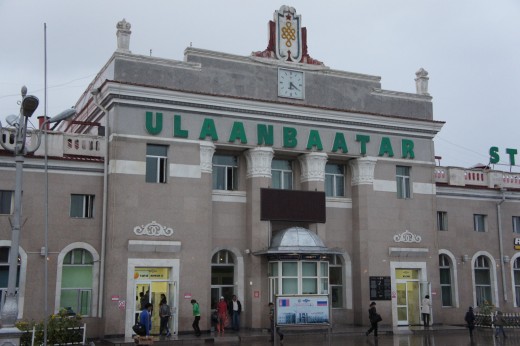
Travel Info
These days, it's all about the internet. Never has organising international travel been so easy, but, it still requires research and co-ordination if you are an Independent traveller.
Securing your visas and tickets in advance is essential. We did our initial reseach via the fabulous 'Man in Seat 61' who recommended we use London-based travel company Real Russia who then organised our visas for Russia, Mongolia and China and booked every leg of our rail journey from Moscow to Beijing. See my previous Hub "How to Ride the Trans-Siberian Railway."
Based on our experience, these to on-line resources were fantastic and took away much of the stress and pre-trip anxiety that this pair of middle-aged travellers were going to experience. Trust them to help you plan your trip and you won't go too far wrong.
Flying
If you have more money than time then it's possible to fly to UB from just about anywhere these days, although direct flights are probably harder to come by. But I believe that a trip to a country as rare as Mongolia is something special and even the journey there should be part of the experience. Nevertheless, here's a link to the Mongolian Airlines - help the local economy, fly Mongolian.
How To Get There
It is possible to fly in from certain international destinations such as Seoul, Beijing, Moscow and even Berlin, but by far, the best way for the novice Mongolia tourist to arrive in the country is by train. The Trans-Mongolian leg of the Trans-Siberian railway cuts through the centre of the country and always stops in Ulaan Baatar. So, if you want to make the BIG TRIP - Moscow to Beijing - then a week or so in Mongolia is a no brainer.
Likewise, if you are planning a trip to China and have the time, then organising a rail journey from Beijing up to UB is a stunning alternative to some of the over-crowded Chinese hotspots that you may otherwise visit. From Beijing it is a two day/one night journey by train across Northern China and the Gobi Desert, an experience in itself. From Moscow, it takes about seven days (with no Russian stopovers) to ride the rails to UB, plus the extra two days to finish the journey in Bejing. We met a Dutch couple who were doing just this - a three week trip of a lifetime instead of the usual summer holiday in Spain or Thailand.
Note on Visas
Foreign nationals from a small number of countries (including the USA) don't require tourist visas, but if you are planning to go, it's best to check that you are eligible rather than just turn up at a Mongolian border without one.
The Embassy of Mongolia in the UK website is useful for updates.
The Embassy of Mongolia in China website
Currency
Mongolia uses the quaintly named Togrog, (or tugrik) as it's currency. Current exchange rate (2015) is about 2000MNT to USD$1.00
Our Bucket List
These are the things we hoped to do on our 10 day Mongolian stopover
- Arrive and leave by train
- Spend some time in Ulaan Baatar
- Visit some Buddhist monasteries
- Spend a few nights out in the steppes
- Stay in a traditional ger with a nomad family
- Go horseriding
- Ride on a two-humped Bactrian camel
- Drink fermented mare's milk and yak's milk tea (well, maybe not)
- Soak up the culture
- Live to tell the tale back home
That's our Beginner's Bucket List... let's tick it off
Things to Do in Mongolia
Tourists take note: Mongolia is NOT the place to go if you want sun, sand and surf - for one, it's a land-locked country, so no surf, although there is plenty of sand in the form of the Gobi Desert and the dunes of the Little Gobi near Ulaan Baatar.
Experienced travellers know that visiting foreign countries isn't just about 'doing and seeing things', it is primarily about just being there - experiencing the daily life of another country is, in itself, reward enough. The adventures that you can have once there are add-ons to that cultural experience and Mongolia offers great opportunities for outdoor pursuits, from simple hiking in the mountains around the capital to expeditions on horseback in the wild west of the country.
We had little idea of what we would do once in country: shamefully our pre-trip research into Mongolia was cursory, mainly because it was just one destination amongst hundreds on our long journey from the UK to Australia. Our plan was to arrive and figure out what to do once there, based on the little we already knew and the conversations we had with other travellers en route to the country.
Ulaan Baatar mini-gallery
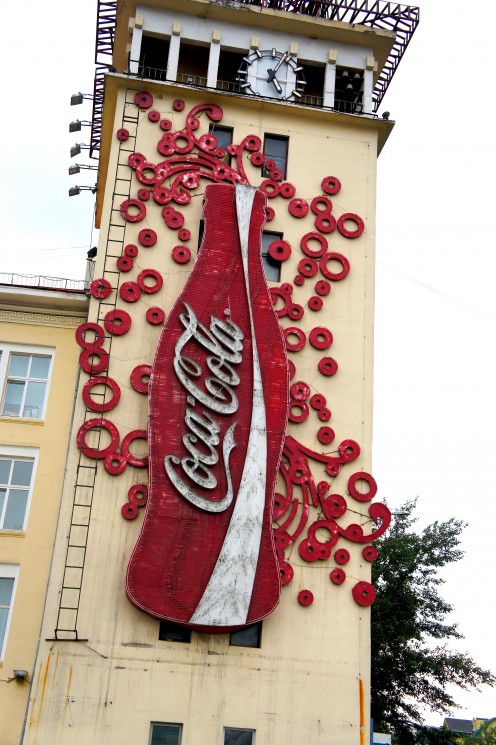
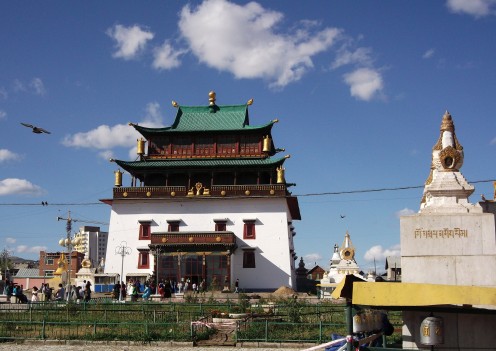
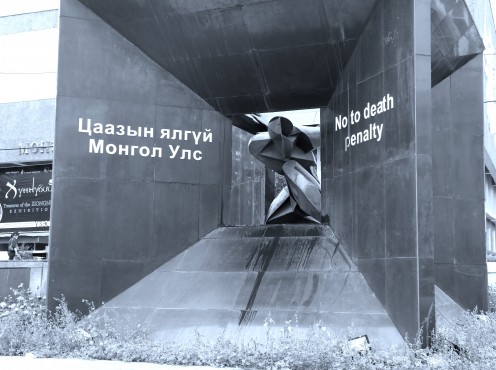
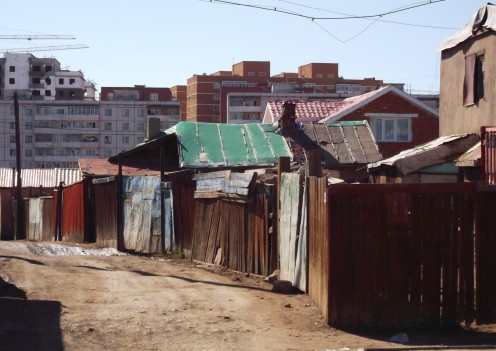
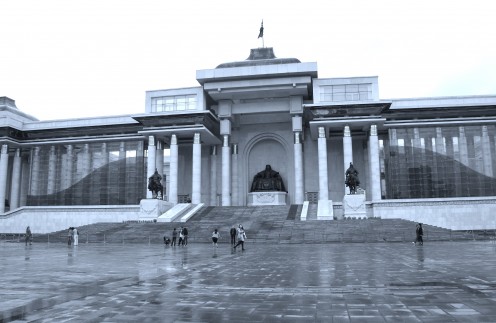
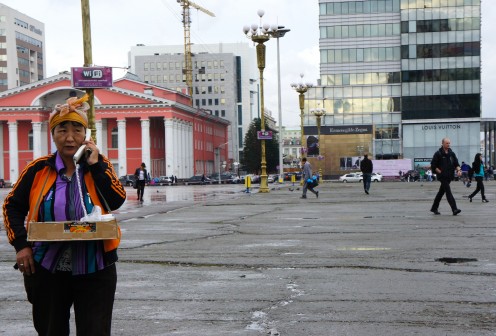
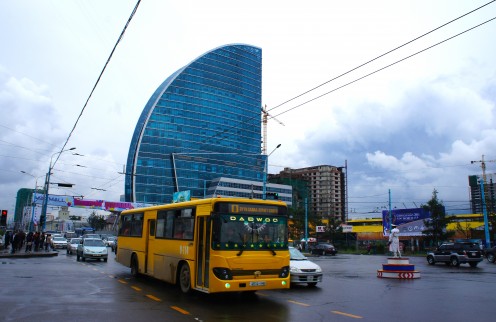
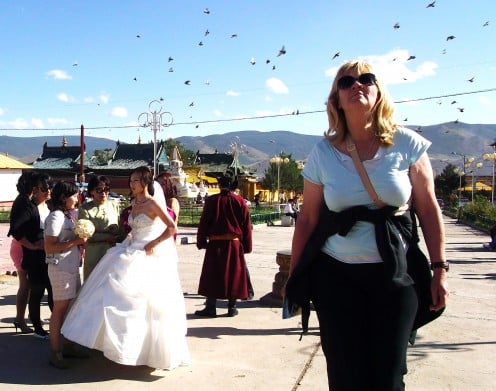
Ulaan Baatar
It's spelt Ulaan Baatar, Ulan Bator, or various combinations of those two, but you and I can call it UB from now on (The locals however, don't call it this).
It's a city of about one million inhabitants, over 40% of the entire population of Mongolia. Modern times have seen the nomadic population gradually drift into the big smoke for a supposedly better life, complete with many of the trappings of modern times - TVs, mobile phones and designer clothes. Judging by many of the ramshackle suburbs surrounding the city centre I wonder if things aren't better in the wide open spaces. There is a long boulevard, Peace Avenue, that runs through the length of the metropolitan area. It is clogged with traffic from 7am until midnight and you take your life into your hands trying to cross it, but that's not unusual anywhere in Asia - you do become skilled at pedestrianism with practice, although we spent an inordinate amount of time stranded in the middle of the road waiting for gaps in the traffic to leap through.
UB has an array of modern skyscrapers and civic buildings, especially in and around Sukhbaatar Square. The city really bustles with life and after a couple of days I decided that it is a kind of far north Bangkok of all places. It feels like a hub, a base, where foreign visitors can shop, eat, chill out and organise themselves before heading into more challenging locations. There's a huge selection of international restaurants, travel and expedition agencies, backpacker hostels and hip, trendy young locals. There are sidewalk street traders, flash western-style supermarkets as well as more traditional retail outlets. Of course there is a National Museum, a host of statues and monuments and there is even a ski resort up in the mountains that overlook the metropolis.
UB has a buzz about it that we weren't expecting. It is youthful, bustling, and growing. Sights to see include the The Gandantegchinlen Monastery situated on a hill overlooking the city centre. It's name translates to "Great Place of Complete Joy", and in many ways that sums up UB. We left with fond memories of this crazy city, so far from anywhere else.
The Mongol Rally
The Mongol Rally is billed as the ultimate adventure. It starts at the Goodwood race circuit in England and ends in a back street in Ulaan Baatar. The rules stipulate that vehicles must be no more than 10 years old and have an engine size no bigger than 1200cc. It's not a race as such and there is no specified route across Europe and central Asia. All vehicles that actually make it to the finish line are donated and sold to Mongolian Charities. Last year two Brits were killed during the endurance test and several participants are injured each year.
We stumbled upon the official finishing line when we arrived and actually saw several beat up cars arriving while we were there. We also met a team out in the back country while on our 'tour'. It really is the ultimate adventure and one I would love to do, though I doubt I ever will.
The event is organised by a querky organisation called The League of Adventurists International Ltd. Check out the official website for the rally and see if you don't get inspired to raise a team yourself.
http://www.theadventurists.com/the-adventures/mongol-rally
The Ultimate Way To Get To Mongolia
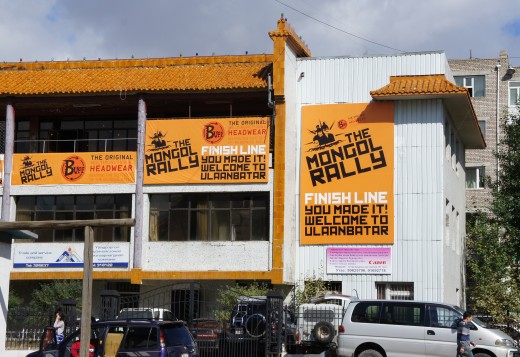
Where to Stay in Ulaan Baatar
There is plenty end of choice to cater for all budgets. We stayed in Zaya Hostel as recommended by the Lonely Planet. It falls under the budget option with current prices (2013) at $50 per night for a triple; $40 for a double and $30 for a single. Like many UB hostels, Zaya's is on the 3rd floor of a high-rise and a bit tricky to find. However, once inside it is a top notch place with what are possibly the best showers in Asia, no kidding. The breakfast is tasty and bountiful, and Zaya herself is a real character.
When we returned to UB after our tour we couldn't get back into Zaya's for our last night in Mongolia so had no problem checking into the Seoul Hotel just down the alley. This looks OK from the lobby but the rooms were over-priced for what you get, the staff were unhelpful and the place seemed to cater for horny Korean businessmen, judging from the sleazy strip club atmosphere in the bar. Lonely Planet recommends the budget options over mid-range, as not only are they better value but you also get to meet other travellers to go on a tour with - save, save, win, win all around.
My advice is too make sure you book a room before you leave home, and no matter how old you are, the backpacker guesthouse option is the most fun.
Our Magical Mystery Tour of Mongolia
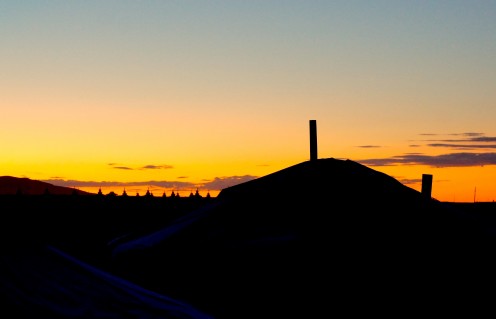
Mongolian Gallery
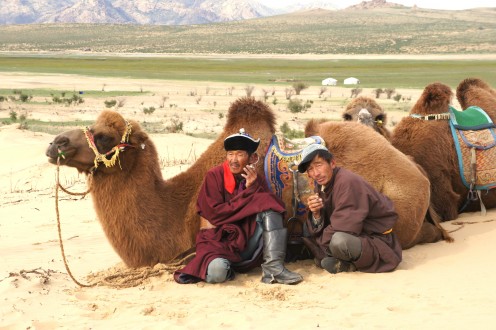
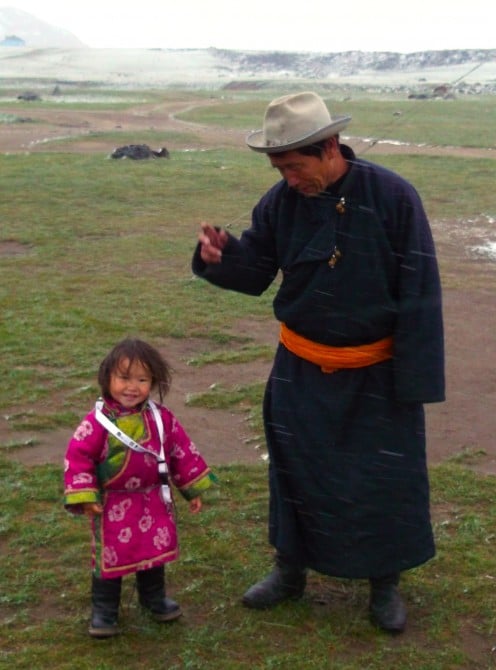
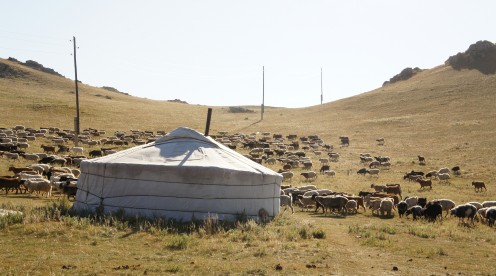
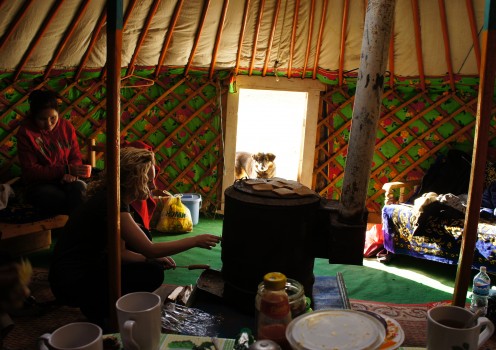
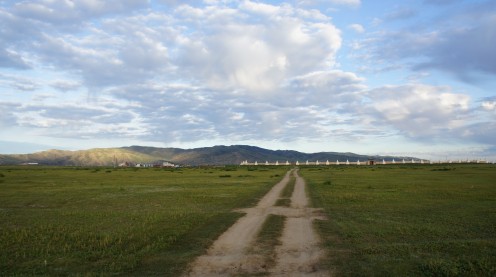
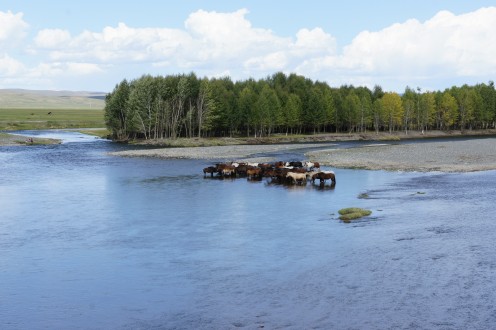
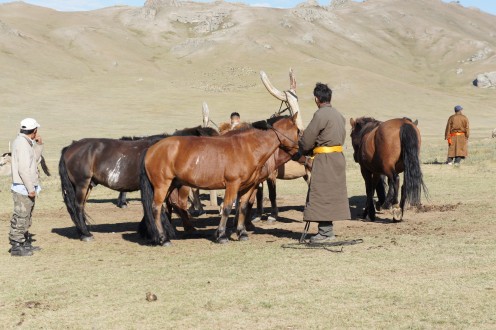
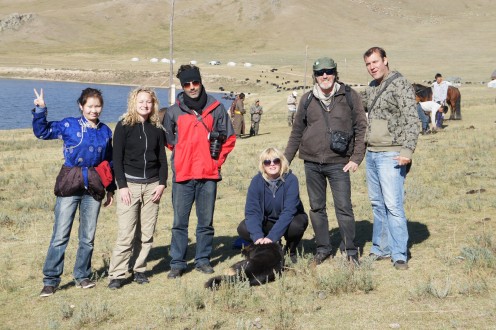
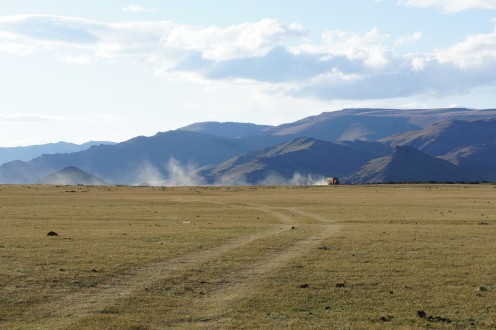
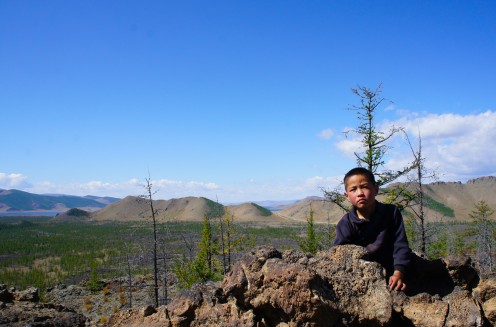
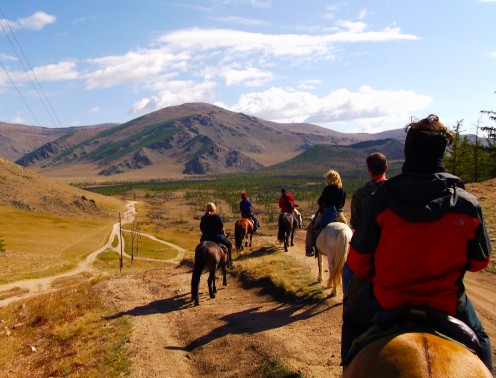
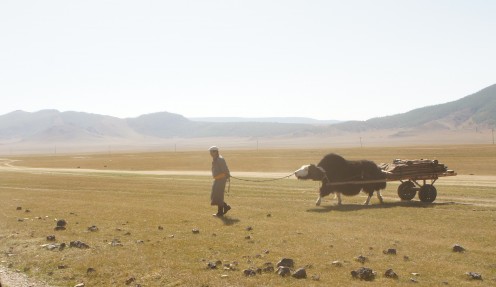
Is it a tour? Is it an expedition?
Call it whatever you like, but this trip or a variation of it, is what a trip to Mongolia is all about.
We arrived in UB with little idea of what we would do or how we would do it, but everything became clear soon after we settled into our guesthouse. I think the point to remember is this, and it applies to side-trips throughout Asia - if you were to book a tour into the Mongolian wilderness in advance, from your home country with a western tour company, you will pay considerably more than if you book when here, direct from the local operator. This is valuable knowledge for the newcomer to Asian and Southeast Asian travel and could theoretically save you hundreds of dollars.
On our second day in UB, we teamed up with four other independent travellers over breakfast, found a tour operator in a nearby hostel and booked a tour before lunch. We all met up in the morning and set off at 10am on what proved to be the most incredible seven day expedition we could hope for.
There are many operators in UB; most hostels offer tours that tick all the boxes and, like everywhere in Asia, they know exactly what western travellers want and deliver it remarkably well. That being said, it is possible to get ripped off or to have a negative experience, but this is often down to bad luck, pure and simple. Our experience was near to perfect. The right mix of organisation and serendipitous adventure.
We found an operator called Khongor Expeditions, located in Khongor Guesthouse (Address: Peace Avenue,Chingeltei District, Block15/5#6 , 211238 Ulaanbaatar, Mongolia), in a seedy, rundown looking building on the main drag in UB. We told the man what we wanted and he provided us with an itinerary and a price, and that was that. We paid cash and received paper receipts to seal the deal.
Our seven day tour took us on a 1500km circuitous route out of UB, taking in a major historical sight, a National Park with a volcano, a day of horseriding, a visit to a hot spring, a mountain monastery, a waterfall, a camel ride, four-wheel driving, and lots of contact with local nomad families at each overnight stop. Our transport was an eight seater minivan driven by a competent local driver and our guide was a fluent English-speaking young woman by the name of Houlie, who became like our group's close friend for the duration of the expedition. It was a magical tour that certainly met or exceeded our expectations.
Prices will change and there are different itineraries to be travelled, but the typical tour price per person (Our price for 7 days was $252 per person - bargain) should include van, driver, guide, accommodation in gers every night, three meals a day, horseriding, hot springs and entrance fees to monasteries. The least expensive way is to travel with several other people to lower the unit cost. We only had to pay for extras such as beer and wine and a tip for our guide and driver at the end.
I took hundreds of photos on our tour, have a look at a few to get an idea of what Mongolia is really like.
The Little Things: Food, Drink and Language
These are the things that you will be both challenged with on a daily basis and will remember forever - the daily interaction with local life and customs that fill in the gaps between "things to do".
Food
To my knowledge there are no McDonalds etc in Mongolia, although there are plenty of restaurants selling good quality food from around the world; but the food you will eat outside of UB will mostly be the same food that the Mongolians eat. It's meat, meat, meat all the way in Mongolia. They don't grow crops.
Vegetarians will struggle to get their quota of greens out in the steppes, although the vegetarians I know are very resourceful folks and usually find something they can eat. Our two veggies on the tour made do with eggs and the occasional carrots and onions that materialised with the goulash.
Breakfasts, which were prepared every morning by Hoolie our guide, usually consisted of toast, eggs, jam or a rather tasty homemade sweet bread which went down well with the Nescafé that was provided.
Again, the best advice is to stock up on all sorts of snacks and additives in the UB supermarket so you can supplement your meals and snack freely during the long hours you will spend bumping across the rutted tracks that are Mongolian roads.
Mongolian Barbeque
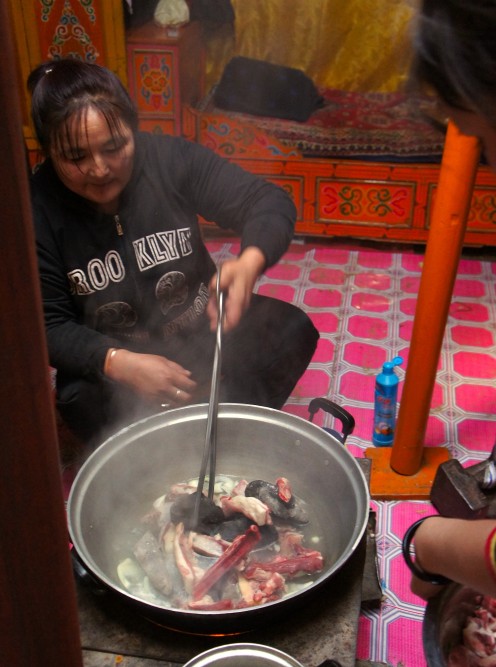
Acquired taste?
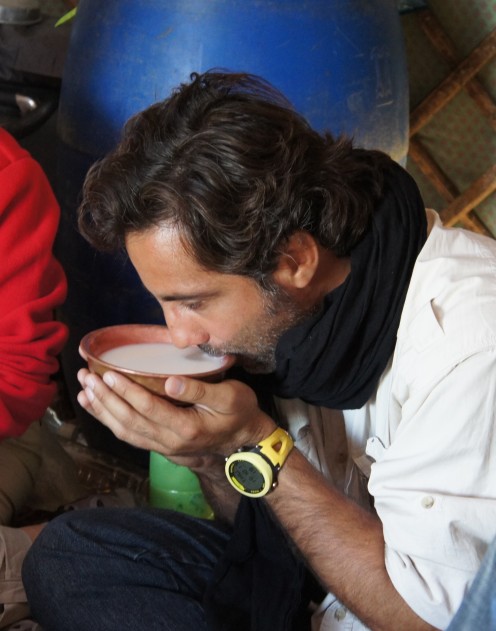
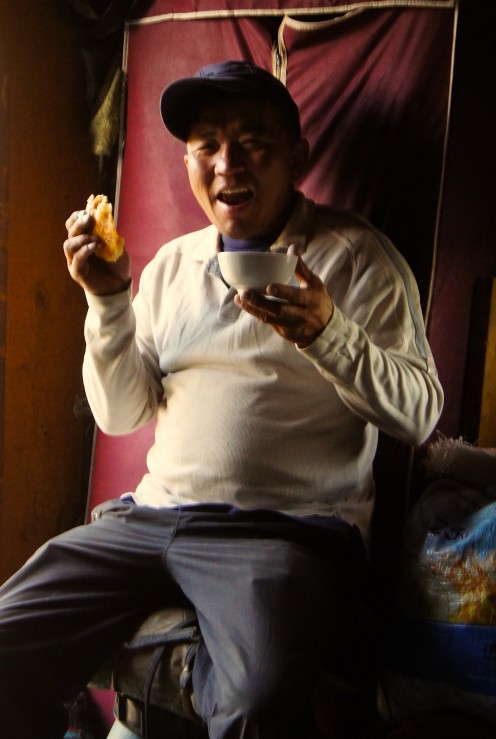
Local Snack
From Siberia to south central China, there is one snack that is consumed by almost everyone - pine nuts. In Mongolia our driver and guide where continuously popping the nuts into their mouths and spitting the shells out the window. In pine forests you will stumble upon family groups collecting pine cones miles from anywhere. They eat them fresh from the cone or they cook them first ; it doesn't matter - people love the fussy little snack.
Drink
This is where the fun begins. The tour company provided 1.5 bottles of drinking water per person per day.
You can buy beer and sometimes wine in a couple of the little towns you stop in along the way - stock up!
If you like coffee or regular tea, bring extra.
Vodka is very popular. I took a bottle of the local stuff - 'Genghis Khan' it was called, of course.
Milk of Mongolia
The nomads virtually live off yak's milk tea. A brew of warm yak's milk and water with a few tea leaves tossed in for flavour. It's OK once you get your palette around it, especially when served with that sweet, chewy nomad bread. Every time you visit a nomad ger you will generally be offered a bowl of tea. Have a sip, it's considered rude not too.
If it smell like horse...
Fermented mare's milk is just possibly the most challenging local home brew you will ever taste. The Nomad lady invited us into her ger and proceeded to ladle the milk into a bowl which was ceremonially passed around our group. Faces were pulled as it went around and when it came to be my turn I could smell the equinne aroma as strongly as if I was sitting in the saddle. The drink itself is kind of pungent, kind of sour and kind of fizzy. Aftertaste? Horsey.
The next horse product I consumed was a crunchy biscuit like substance which is dried horse milk curd. It looked like shortbread but when I bit into it I thought it was the bitter end. To make matters worse I couldn't swallow the dry mouthful and had to hide it in my cheeks until I could leave the ger to spit it out.
We followed up the curd and alcoholic mare's milk with horse vodka - a clear liquid made from the whey of the milk. This was even more disgusting than the milk, and did nothing to wash down my concealed mouthful of curd. I was almost whinnying by the time I staggered out of the ger and made a dash for the van for water and my peppermints.
Language & Communications
The Mongolian language is quite difficult for westerners to master. Many words require pronunciation from the throat, or are tongue twisters. I'm not great with foreign languages but always try to learn some basic words like hello, goodbye, please and thank you, but with Mongolian I couldn't even get thankyou right. Luckily lots of people in UB speak English as did our guide, afterall, that's why she was there. The local people always had a laugh at my attempts to speak their tongue so no harm was done.
The writing is mostly in Mongolian Cyrillic which resembles Russian Cyrillic, except that the words and alphabet are nowhere near as easy to decipher as the Russian. Like in China, all you can do is look at pictures and point.
As for media and communications, there was reasonable internet connection in our hostel in UB; it's probably improved since we were there. I was surprised to see that cell phone coverage worked for our guide even when we were in the middle of nowhere, well, mostly it worked.
Electricity wasn't always available for charging devices, although we managed to keep our camera batteries topped up whenever we stopped in roadside cafés for lunch. As for the mobiles and laptops, we left ours in a locker in the UB hostel - this tour is about getting away from it all.
Let's Go to Mongolia
Would you like to visit Mongolia?
Suggested Packing List
Essentials
| Clothing
| Extras
| Food and Drink for Tour
|
|---|---|---|---|
Tickets inward and outward
| Jeans, Shorts, Swimmers
| Laptop or Tablet
| Chilli Sauce
|
Visas - Mongolia, China, Russia
| T-Shirts, Shirts
| Smart Phone
| Pot Noodles
|
Debit & Credit Cards, Cash
| Hoody or Fleece
| Camcorder
| Chocolate and Sweets
|
Guide & Phrase Books
| Rainwear
| Sound Recorder
| Beer and Wine
|
Camera, SD cards
| All Purpose Jacket
| Sketch Book
| Vodka
|
Batteries, Recharger
| Walking/Hiking Boots
| Guitar
| Soft Drinks
|
Sun Glasses
| Socks and Undies
| A Positive Attitude
| Black Pepper/Salt
|
Flashlight
| Flip Flops and Hat
| Gifts for Nomad Children
| Sweets for Nomad Children
|
Travel as light as you can.
I took my small travel guitar for amusement and entertainment.
Buy your food stuffs in UB.
Gifts for nomad kids could include pencils and sketch or colouring books.
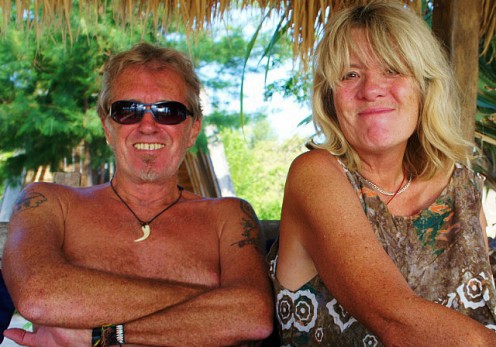
Take a look at the bigger picture
If you want to read more about our Mongolian experience you can always visit our blog/travelogue which covers every step of our overland journey from Norwich in England to Sydney, Australia




